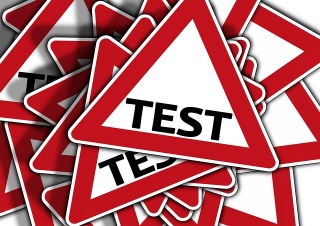Principles of marketing/PMKT103/Product branding distribution channels/Quiz 1
From WikiEducator
Jump to: navigation, search
The questions published at the end of each learning pathway are re-used for the knowledge test for learners interested in earning a digital badge or certificate of participation for the Launching products and generating market demand (PKMT103) micro-course. Please consult the Certify participation page for more information.
True - false questions
Indicate whether the following statements are true or false:
- Retailers that place great emphasis on price and use low prices as their main sales appeal are referred to as chain stores.
- True
- Incorrect. The correct answer is discount stores. Some, but not all chain stores, offer price as a differentiator.
- False
- Correct. Discount stores offer low prices as their main source of appeal to customers.
- True
- Sales growth is a legitimate channel objective.
- True
- Correct. Product marketers look to increase sales in existing markets, and reach into new markets. As a product matures, marketers will look to broaden the number of profitable customer segments for its products. For example, a yoga pants manufacturer may have begun selling yoga pants to yoga practitioners, but in the process of doing so, 'discovered' there were under-served customer segments (e.g. pregnant women, working women, seniors). Each customer segment requires different messaging, marketing collateral, images, advertising, sales promotions, website landing pages, etc. - so there are expenses to trying to reach a different customer segment.
- False
- Incorrect. Increasing sales within different distribution channels is an important indicator of product success. For example, a company may wish to optimize the keywords and images on an e-commerce website, to increase the likelihood that a customer will purchase its product(s), thereby contributing to an increase in sales growth.
- True
- Multi-channel retailing is a distribution strategy to serve consumers using more than one selling channel.
- True
- Correct, this strategy gives retailers the advantage of having an existing brand and multiple sources of customer contact.
- False
- Incorrect. This is a strategy that gives retailers the advantage of having an existing brand and multiple sources of customer contact.
- True
- Criteria to evaluate performance of distribution channels include: the relationship between buyers and producers, sales, advertisement and promotion performance, pricing, and competition.
- True
- Correct. In assessing the relationship between buyers and producers, marketers can look at several things, including relationship quality, terms and conditions, price breaks and special promotions - anything that can provide an advantage in getting products to the target market(s).
- False
- Incorrect. Marketers can look at the amount of competition within their distribution channels - which products are being carried, and on what basis, and whether it is affecting sales volume. This analysis can help determine whether the channels are working well or not.
- True
Multiple choice questions
- The products that are sold through a widespread distribution network are classified as:
- Convenience products
- Correct – the wide distribution network ensures easy access to convenience products that are used frequently and purchased with minimal effort such as newspapers and candy.
- Unsought products
- Not exactly – such products are products that consumers don't know about or don't actively look for.
- Shopping products
- Not really - shopping products are products that require consumer research and comparison of brands such as home appliances (washers, dryers, or a fridge).
- Convenience products
- At the strategic level, there are three broad approaches to distribution, namely:
- Mass, selective or exclusive distribution
- Correct – mass is a strategy used mainly for convenience products appealing to a mass market, selective is used with shopping goods where for a example a manufacturer of premium electrical goods may choose to deal with department stores and independent outlets that can provide added value service level required to support the product, and exclusive is when a manufacturer chooses to deal with one intermediary or one type of intermediary to retain greater control.
- Push, pull and mixed
- Incorrect – push and pull strategy selection is another strategic decision but that relates to advertising and promotion.
- Mass, intensive and selective
- Not really – mass and intensive are the same type of strategy.
- Mass, selective or exclusive distribution
- Which of the following lists best describes the typical intermediaries involved in distribution?
- Wholesaler, agent and jobber
- Not exactly – you are missing the retailer which is a key intermediary for convenience goods.
- Wholesaler, retailer, agent and jobber
- Correct – these are the typical intermediaries involved in most distribution channels.
- Wholesaler, retailer, reseller, agent and jobber
- Not exactly – all of the market intermediaries are resellers.
- Wholesaler, agent and jobber
- Which of the following is NOT a branding strategy?
- Association branding
- Correct – this is not a branding strategy. Brands strive to achieve customer association with them by developing their image, personality and attributes to appeal to their target customers.
- Personal branding
- Incorrect – this is a branding strategy when a person or individual builds a brand around themselves usually to enhance their career opportunities.
- Product branding
- No – this is a branding strategy. Product brands are developed to differentiate products and persuade customers of the benefits of buying them.
- Corporate branding
- Not really – this is a branding strategy. Organizations brand themselves - the corporate brand defines the company and what it stand for (e.g. Nike, Apple, Virgin).
- Association branding
